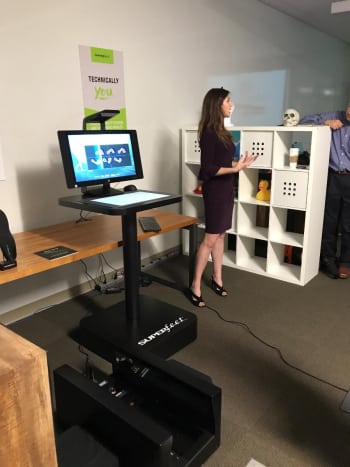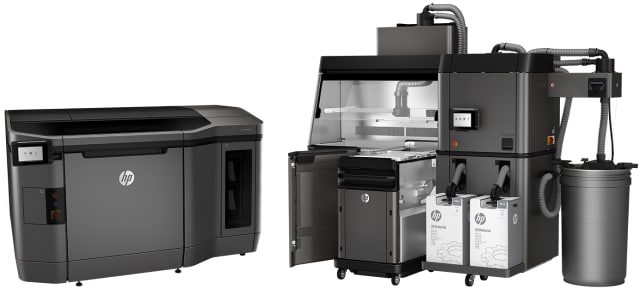
With all the things humans wear, nothing is as critical as shoes. For all the walking, running, working out, dancing, climbing – our full weight bearing down with each step, more than that when running. Thousands of times a day. Our feet are as unique as each of us, yet we are forced into a few standard sizes and shapes. How can we all NOT all have custom made shoes?
It’s not like custom made shoes are not available. British cobblers have been making bespoke (Brits have a different word for everything) shoes for centuries but sold for a pretty penny, only the most affluent can have them.
HP aims to change all that. Getting together with retail shoe store chain, Superfeet, HP, the company best known for its printers and computers, aims to revolutionize footwear, by making each of us our very own shoes.
To make this happen, the key ingredient is HP’s Multi Jet Fusion 3D printer, or MJF, a quarter-million dollar behemoth of a system made for mass manufacture – or in this case, mass customization. The MJF’s size and cost will be accommodated offsite and shared by several stores. The in-stores equipment will be a pad on the floor with sensors that measure forces as you walk or run, and another device you step into takes a 3D scan of your bare foot. The digital model of your foot and the forces it exerts on the pad is somehow combined to create a model of the perfect shoe. A perfect fit for each of your feet, unlike any other shoe in the world.
The cost of custom made insoles are expected to be $150 which I hope is at least for a pair. The whole shoe was not revealed, but expect it to be some multiple of the price of the insole. Not cheap. But compare that to what a luxury Hong Kong custom shoemaker charges ($1500 to $9K), a bargain.
With 3D printed material, yeah they’ll not last as long. You probably cannot repair them, either. But with shoemakers disappearing from Main Street, USA and shoe repair from the realm of possibility, that may no longer be anyone’s concern.
It is with supreme audacity that a printer/computer maker wades into the age-old footwear industry, as if going digital changes everything, that tradition and craftsmanship are so overrated. But isn’t that what happened when Apple decided it could make a better (at least more stylish and modern) watch?










